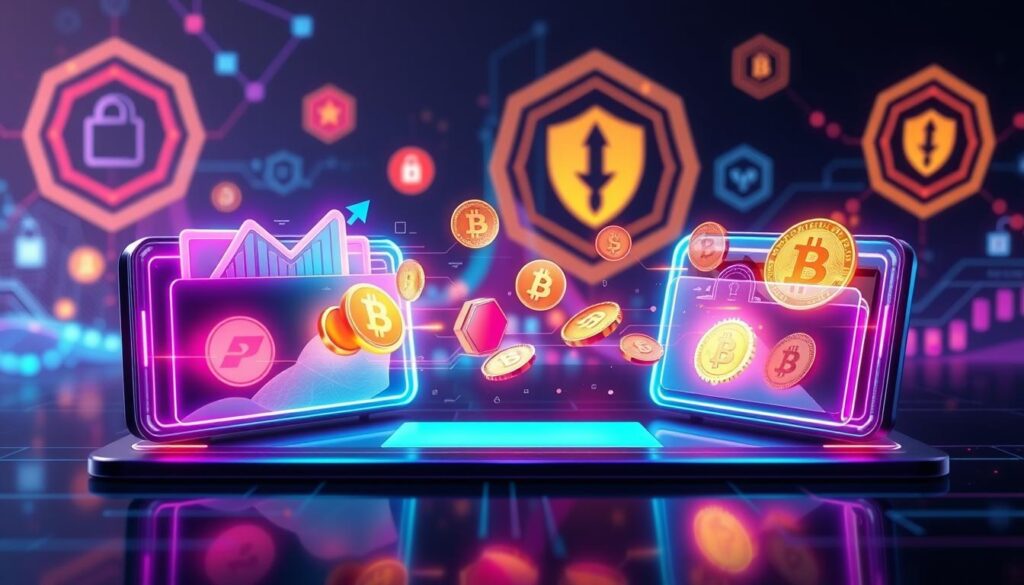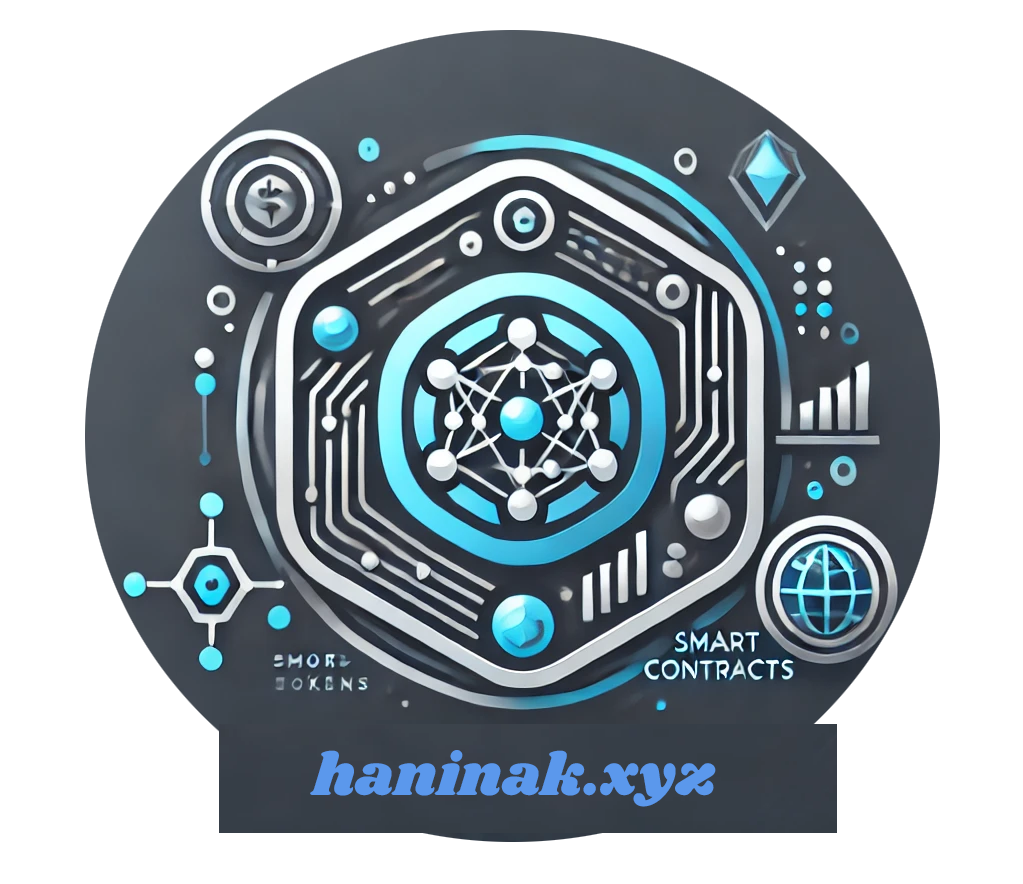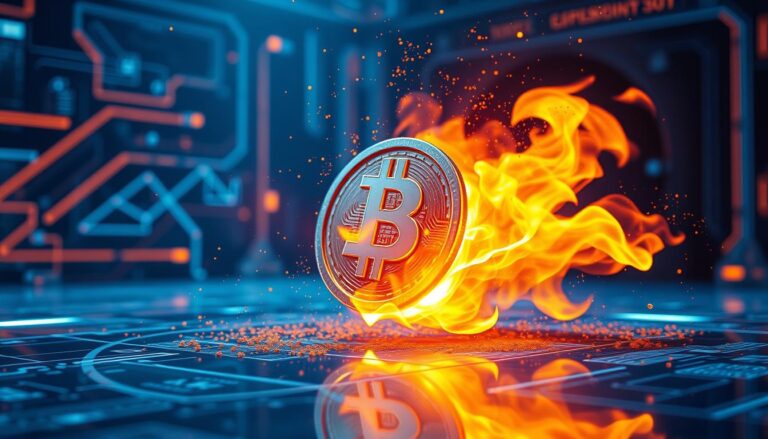How can Tokens be transferred between digital wallets?
Digital wallets are becoming the top choice for payments worldwide. By 2026, they will reach 5.2 billion users, making up 60% of the global population. They offer better security and a smoother experience for everyone, thanks to tokenization.
Tokenization is crucial for digital wallets. It keeps sensitive card info safe by swapping it with unique tokens. This involves the cardholder, wallet provider, issuer, and network. It makes sure tokens are only for the device and wallet they’re made in, boosting security.
Understanding how to move tokens between wallets is key. As the token market grows, reaching $2 trillion by 2030, secure transfers are more important than ever. This article will dive into the tech, protocols, and security behind token transfers. It aims to give a full picture of this vital part of digital payments.
Understanding Digital Wallets and Token Basics
In today’s world, we’re moving away from old-school wallets to digital ones. These new apps let you keep all your payment info safe on your phone. They use top-notch security to keep your money safe, making them great for token-based transactions and mobile payment processing.
What Defines a Digital Wallet?
A digital wallet is a software app that lets you handle different payment methods online. It’s a smart way to pay without using physical cards. Digital wallets are known for their:
- Strong encryption and multi-factor authentication for better security
- Tokenization to keep your card info safe
- Easy use with mobile devices for tap-to-pay
- Ability to hold and manage many payment methods at once
The Role of Tokens in Digital Transactions
Tokens are key in making digital wallet software transactions safe. They replace real card info with a safe digital code. This makes token-based transactions safer from hackers and fraud.
Types of Digital Wallet Providers
The world of digital wallets is wide, with many providers for different needs. Some top digital wallets include:
- Apple Pay: A mobile payment and digital wallet service by Apple, available on iOS devices
- Google Pay: A digital wallet and payment platform developed by Google, compatible with Android devices
- Alipay: A leading mobile and online payment platform in China, owned by Alibaba Group
These wallets use tokens and other advanced security to offer a safe and easy mobile payment processing experience.

The technology of Tokens, its techniques, and everything related to it
The world of digital tokens is changing fast. New technologies and techniques are changing how we see value and interact online. At the center of this change is tokenization. It makes it safe and easy to show assets, rights, and identities on blockchain.
Techniques like token classification and token embeddings are key to token-based models. These models use tokens in new ways, like in finance and digital identity. Knowing how tokens work helps us see their full power.
Now, there are many types of tokens, each for a different use. You have reward tokens, utility tokens, security tokens, governance tokens, and asset tokens. This shows how versatile tokens are and how they can solve many problems.
The world of tokens is always changing. From the ICO craze to the rise of IEOs, the industry has grown a lot. Keeping up with these changes is key to understanding tokens.
By looking into tokenization techniques, token classifications, token embeddings, and token-based models, we can see tokens’ true potential. They could make our digital lives safer, more efficient, and more innovative.

In the end, tokens are leading a new wave of innovation. By diving into their technology, we can grasp their power. This power changes how we live in the digital world.
Token Networks and Digital Wallet Protocols
In the fast-changing world of digital assets, token networks and wallet protocols are key. They help make transactions safe and easy. These systems set the rules for token-level analysis, token generation, token representation, and managing token vocabularies.
Popular Token Networks Explained
The Ethereum network is the second-largest blockchain and supports many tokens. The ERC-20 token standard on Ethereum helped start the ICO craze in 2017. It’s still popular today. Other big networks include Bitcoin, Binance Smart Chain, Solana, Cardano, and Tezos, each with their own special features.
Common Token Protocols and Standards
Token protocols and standards set the rules for digital assets. The ERC-20 standard on Ethereum has been joined by ERC-721 and ERC-1155. These standards meet the growing needs of the blockchain world. Algorand, Solana, and others have their own standards, like Algorand Standard Assets (ASAs) and Solana’s SPL tokens.
Network Compatibility and Interoperability
As more blockchains emerge, network compatibility and interoperability are more important. Different networks have their own rules and standards, making transfers tricky. Cross-chain bridges and interoperability protocols are being made to make token transfers and interactions easier across networks.
| Token Network | Popular Token Protocols | Interoperability Initiatives |
|---|---|---|
| Ethereum | ERC-20, ERC-721, ERC-1155 | Polkadot, Cosmos, Chainlink |
| Binance Smart Chain | BEP-20 | Binance Bridge, Multichain |
| Solana | SPL | Wormhole, Raydium |
| Cardano | Native Tokens | Milkomeda, Maladex |
Token Transfer Mechanisms Between Wallets
Transferring tokens between digital wallets is key in cryptocurrency deals. It means sending tokens from one wallet to another. You need the sender’s and receiver’s addresses, the amount, and fees. Cross-chain token transfers move tokens between different blockchain networks.
Atomic swaps let users exchange tokens directly between chains without middlemen. This method is decentralized, making it less dependent on big exchanges.
Sidechains are connected blockchains, like Bitcoin or Ethereum. They allow token transfers through “pegging,” where tokens are locked on the main chain. Then, new tokens are created on the sidechain.
Cross-chain bridges link different blockchain networks. They make moving tokens between them easy. This involves locking tokens on one network and creating new ones on the other.
| Token Transfer Mechanism | Description |
|---|---|
| Atomic Swaps | Peer-to-peer token exchanges between different blockchain networks without intermediaries |
| Sidechains | Blockchains connected to a parent chain, enabling token transfers through pegging |
| Cross-chain Bridges | Connections between different blockchain networks, facilitating token transfers through locking and minting |
These methods give users many ways to move digital assets. They make it easier and cheaper to do cryptocurrency transactions.
Security Measures in Token Transfers
In today’s digital world, tokenization is key to making token transfers safer. It swaps out sensitive data for unique tokens. This cuts down on theft and fraud risks, making transactions smoother and more secure.
It also meets strict security standards like PCI DSS. Digital wallets use extra security steps like multi-factor authentication and encryption. These steps make transactions even safer.
Tokenization Process and Benefits
When you add a card to a digital wallet, tokenization kicks in. It creates a “token” that stands in for your card details. This way, your real card info stays hidden.
This method lowers the chance of data theft, builds trust with customers, and follows top security rules.
Authentication Methods
Security tokens use a mix of physical items and passwords to check who you are. This multi-factor approach adds a strong layer of defense. It makes it harder for hackers to get to your data.
Encryption also plays a big role in keeping your data safe during transfers.
Risk Management Protocols
Digital wallet services have strict risk management plans to keep token transfers safe. They check device scores and risk levels. They also do deep risk assessments.
These steps help fight off common threats like loss, theft, and hacking. They help build trust between merchants and customers.







